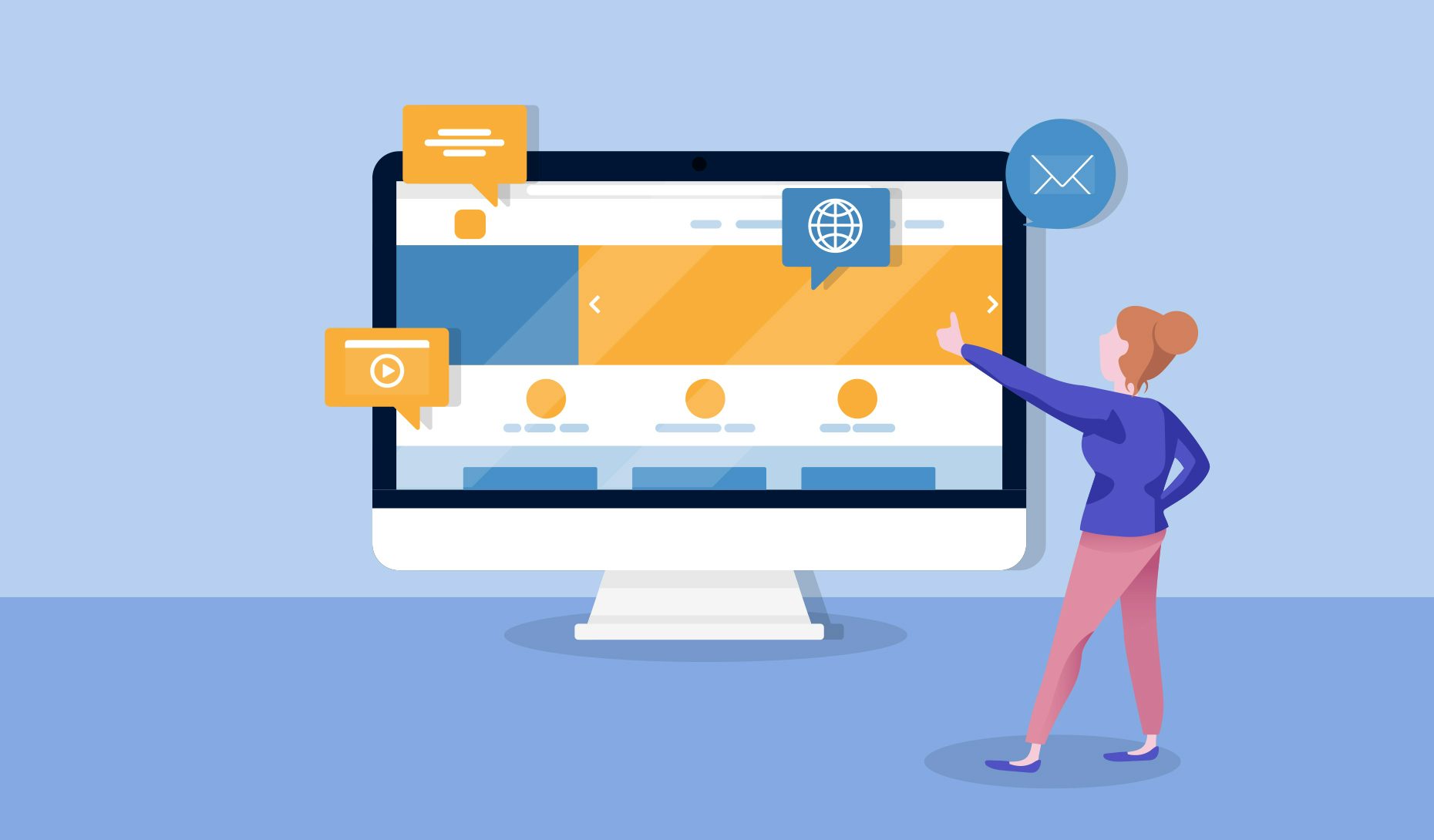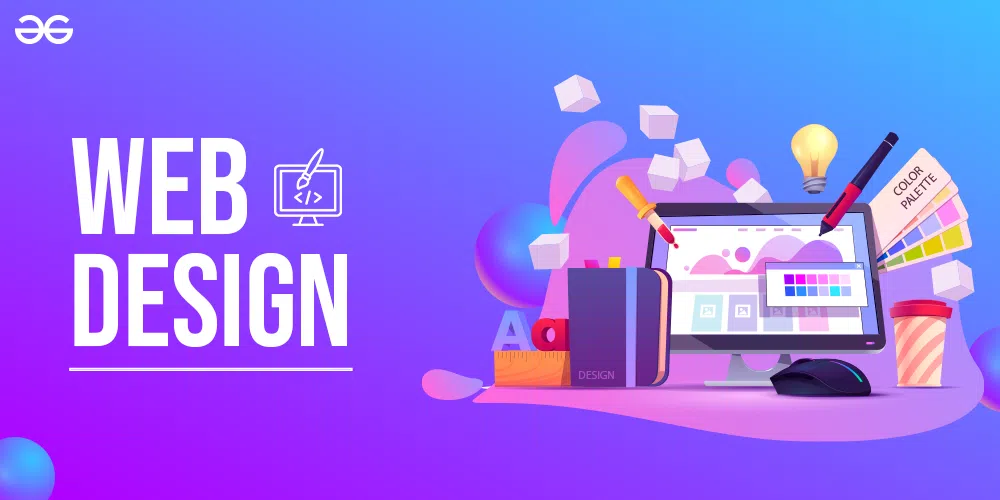Discover Quality Web Design Near Me for Your Service Growth
Discover Quality Web Design Near Me for Your Service Growth
Blog Article
How to Use Web Layout Principles to Raise Your Website's Involvement
In the affordable electronic landscape, the capability to captivate and retain visitors depends upon applying reliable website design principles. Focusing on a seamless user experience while making certain ease of access can considerably improve interaction. This involves refining navigation structures for intuitive browsing, enhancing sites for mobile responsiveness, and employing visually compelling aspects. The strategic use color and typography more enhances the user's trip, creating a welcoming and interactive environment. As we explore these principles better, take into consideration just how each element can change an easy check out right into an engaging communication, opening the prospective to boost your site's influence.
Enhancing Navigation Framework
A well-structured navigation system is critical for enhancing user involvement and making certain a seamless surfing experience. It acts as the foundation of any type of website, leading users via content effectively while minimizing the cognitive lots connected with finding info. Effective navigating layout is not merely regarding visual appeals but entails a tactical plan of components that promote availability and convenience of usage.
To boost navigation framework, one have to focus on simplicity and clarity. A messy food selection can overwhelm individuals, potentially driving them away. Classifying content right into intuitive and rational groups makes sure individuals find what they are looking for with very little effort. Implementing a consistent navigation plan throughout all pages cultivates knowledge and motivates prolonged interaction.

Optimizing Mobile Responsiveness
With the enhancing occurrence of mobile gadgets, optimizing mobile responsiveness is crucial for maintaining user engagement and satisfaction. As even more individuals gain access to sites via smartphones and tablet computers, ensuring your website is mobile-friendly is not simply beneficial-- it's necessary.
To attain mobile responsiveness, beginning by making use of adaptable grids and formats. Employ CSS media inquiries to guarantee layout components adjust to different screen dimensions. Focus on touch-friendly navigation by increasing the size of switches and spacing web links effectively, lessening unintentional clicks. Furthermore, consider optimizing media and photos to decrease lots times, which can considerably impact individual retention on mobile systems.
Frequently testing your site on different gadgets and web browsers helps identify prospective issues and improve individual experience. By prioritizing mobile responsiveness, you cater to a wider audience, inevitably increasing interaction and driving website success.
Crafting Engaging Visuals
Fascinating visuals are the keystone of involving web design, flawlessly attracting users right into the website's narrative and improving their total experience. They provide an immediate visual impact that connects the brand's identity and message, fostering a link between the web content and the user. To achieve this, visuals need to be thoughtfully crafted and tactically placed learn this here now to direct customers' attention without overwhelming them.
Top notch images and graphics should be used to produce a visually enticing environment that encourages exploration. This includes picking visuals that are not just aesthetically pleasing but additionally pertinent to the content, ensuring they add value instead than act as plain decoration. Including personalized pictures or infographics can also enhance understanding, as they simplify intricate info and make it extra absorbable.
Furthermore, the assimilation of multimedia aspects such as video clips and animations can better improve the customer experience. These vibrant visuals capture focus and can efficiently demonstrate items or tell stories, making the web content more remarkable. It is vital to balance these elements to maintain a natural design that sustains the site's goals. By focusing on engaging visuals, web designers can significantly raise customer interaction, inevitably causing higher retention and conversion rates.
Using Strategic Shade Usage
Incorporating color strategically is a basic facet of internet layout that complements compelling visuals in captivating individuals. Shade not only boosts visual appeals yet additionally plays a crucial duty in assisting customer actions, developing brand name identity, and stimulating psychological responses. click here to read By understanding shade theory and psychology, internet developers can produce a unified and engaging customer experience that retains site visitor rate of interest.
To use shade efficiently, consider the emotional impact each hue may convey. Consistency in color combinations throughout a website assists strengthen brand recognition and customer knowledge.
Contrast is an additional crucial consideration. High comparison in between background and message shades boosts readability and access, making certain that content is conveniently digestible for all individuals. In addition, accent colors can be purposefully utilized to accentuate vital aspects such as call-to-action buttons or vital notices, boosting user interaction and conversion prices.
Eventually, a well-balanced color strategy not just improves visual appeal but likewise significantly adds to a site's general interaction, directing individuals with ease with their online trip.
Improving Typography Options
Typography offers as the foundation of internet design, exceptionally influencing individual interaction and the total visual of a website. Reliable typography enhances readability and fosters a smooth user experience, motivating visitors to check out web content extra completely. To enhance typography choices, web designers need to think about factors such as font style choice, size, line spacing, and shade contrast.
Choosing the appropriate font is important, as it communicates your brand name's individuality and tone. Sans-serif font styles such as Arial and Helvetica offer modern-day quality, while serif font styles like Times New Roman share standard expertise. Integrating font styles can create aesthetic hierarchy, leading customers' attention to essential details. Nonetheless, it is important to restrict font variations to keep a cohesive appearance (Web design near me).
Font dimension and line spacing likewise play a crucial role in readability. Generally, a minimum font dimension of 16 pixels is recommended for body message to guarantee ease of reading across gadgets. Ample line spacing, usually 1.5 times the typeface dimension, protects against message from showing up confined.
Finally, shade comparison in between message and background is basic for accessibility. Tools like the Internet Web content Accessibility Standards can help validate that comparison levels satisfy suggested standards, making certain content is obtainable to all users.
Final Thought

As more individuals accessibility web sites through tablet computers and mobile phones, ensuring your site is mobile-friendly is not simply useful-- it's critical. Routinely testing your website on numerous devices and internet browsers assists determine potential problems and refine individual experience.Exciting visuals are this article the keystone of involving internet layout, seamlessly attracting individuals right into the site's story and improving their general experience.Typography serves as the backbone of internet design, greatly impacting individual engagement and the total aesthetic of a site.Including efficient web style concepts considerably increases site engagement by focusing on individual experience and availability.
Report this page